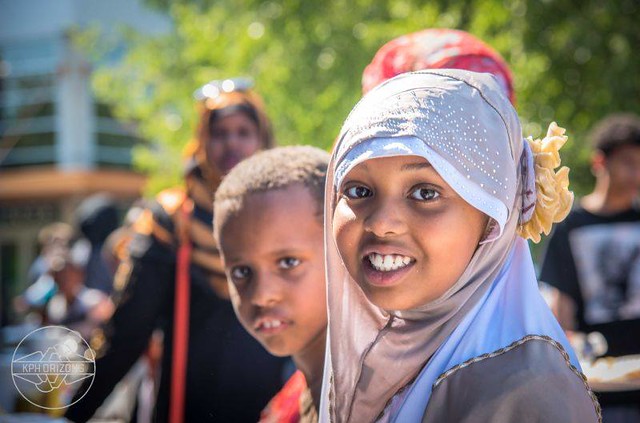Story by Damme Getachew
East African Community Services (EACS) is a lighthouse for hundreds of youth who simply want to succeed in education and life. It’s located in the New Holly Neighborhood Campus in Southeast Seattle, where more than 65 percent of residents are East African.
As a first-generation Somali-American, Executive Director Faisal Jama knows what it’s like to be in the shoes of the students he passionately serves. There is an opportunity gap that East African youth experience in traditional school systems, and even within their own communities, Jama says.
As children of immigrant parents, or as immigrants themselves, East African youth grow up with less understanding of how to successfully navigate the education system than their counterparts.
That’s why EACS exists — to provide “culturally responsive” K-12 education programs during after-school hours throughout the academic year and in the summer.
“We focus on being proactive, not reactive so that our kids are prepared,” Jama explains. Students start algebra by 8th grade instead of 9th and take math for four years instead of the three-year high school requirement.
They also hold frequent workshops where community members come in to talk about their careers, family, culture and identity, providing East African youth with tangible role models for success.
“In our community, there are a lot of people that are serving our kids, but it’s not us…” Jama emphasizes. “We make sure our professionals and our volunteers can relate to them.”
In other workshops, students engage in discussions on African and African-American literature. It’s important that one knows where you come from — it encourages self-love, Jama says.
Since its inception, EACS has transitioned alongside the East African immigrant community it serves — from aiding newly-arrived refugees in the ‘90’s with necessary social services, to offering full-blown educational training for the children of those same families a generation later.
As Jama puts it, EACS doesn’t intend to be-all and do-all for East African youth. Instead, the organization recognized that becoming an education-only institution was exactly what the kids needed.
In partnership with local colleges, student-teachers instruct their classes. EACS also regularly employs high school students as interns and brings in volunteers from the community to ensure strong support in the classrooms.
Since their full transformation in 2013 to an education organization, EACS has seen a 30 percent increase in student enrollment. “It’s all from word-of-mouth,” Jama explains. Parents are telling other parents.
EACS alum Ahlaam Ibraahim is an example of what continuous and culturally-relevant support can do. Ibraahim was recognized for her high academic achievements in a recent Seattle Times article, and has become well known for her community activism. She even launched her own initiative, “Educating the Horn,” in connection with EACS recently, to help high school students fill out college applications and apply to scholarships.
Beyond college, EACS is also laying the groundwork for more representation from the East African community in the tech industry. With support from the City of Seattle Technology Matching Fund EACS recently began its ICT (Information Computer Technology) Learning Center to offer robotics along with college and career readiness classes. Students gain programming skills, learn how to code and use JavaScript, and more.
“The key is bringing in people that can show them what it looks like,” Jama says. “It’s about career awareness.”
He says it’s not just STEM learning that’s beneficial, it’s the visual depiction that people of color can and do succeed that reaffirms the youth’s belief in themselves and their own ability to thrive.
The City of Seattle is now accepting applications for the 2017 Technology Matching Fund (TMF). In 2016 the city awarded 10 community organizations a total of $320,000 in Technology Matching Funds. This funding assists more than 2,500 residents in historically underserved or underrepresented communities who lack the necessary technology access and essential digital skills to thrive in the 21st century.
